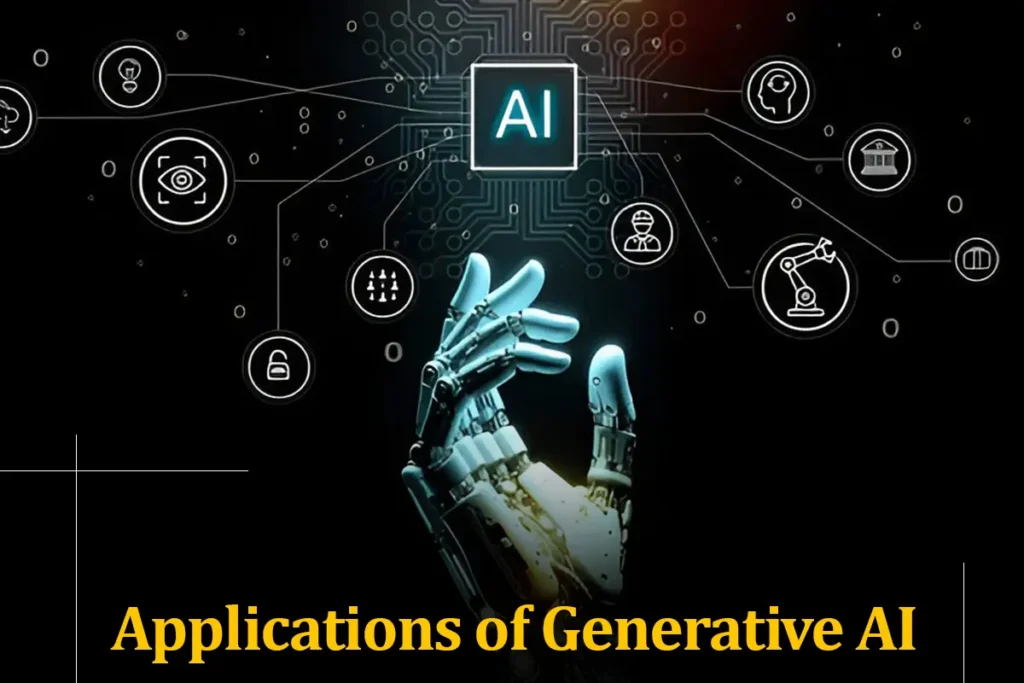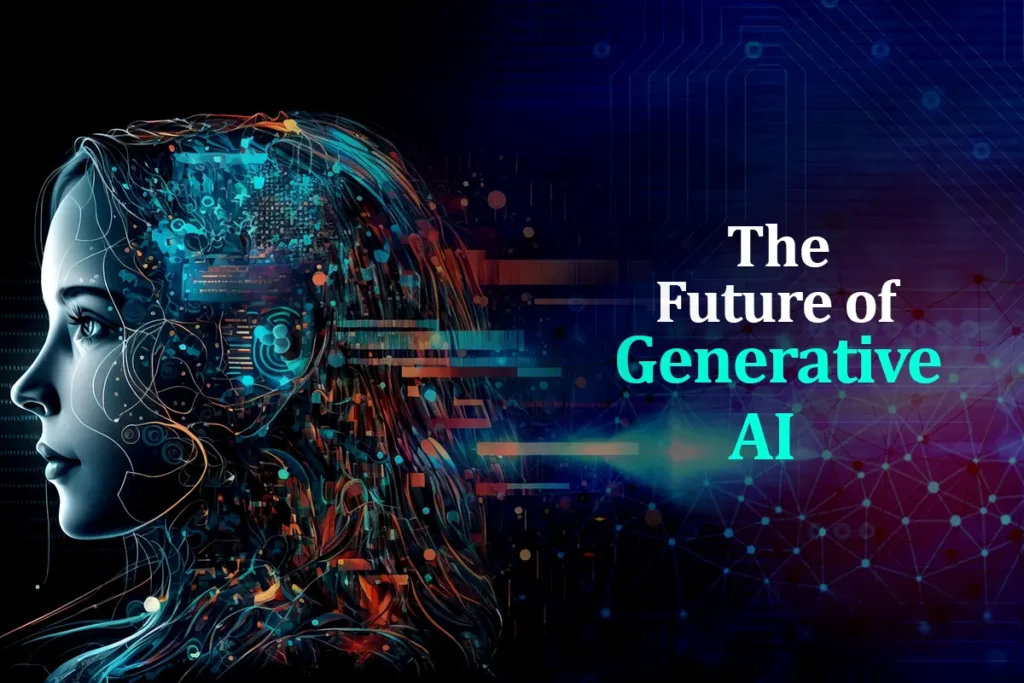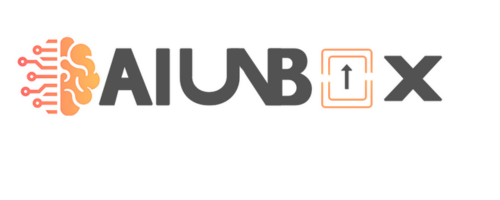Artificial Intelligence (AI) by itself is said to be transforming industries worldwide, but regenerative AI is even more transformative. The idea of generative AI goes further than task automation; it truly addresses content generation, whether that be text, images, music, or even software code.
Generative AI pertains to AI models that can create outputs that are distinct in nature from one another while learning the various patterns deployed in this regard. This certainly is a transformative technology, be it designing images based on intelligence, using generative AI models in healthcare, or using generative fill AI for digital creativity.
In this article, we will examine generative AI in the form of its application area, what it is that a generative AI model aims to do, and how this technology is being used in the business sector, healthcare, and the creative industry.
Understanding Generative AI
What is Generative AI?
In presenting generative AI, we refer to a family of machine-learning models that create new data, text, images, and even video from a development process based on massive datasets. This is unlike traditional AI, which provides classification or analysis of information; regenerative or generative AI creates something unique yet realistic.
Some of the more recognized AI-generated models include:
- GPT models (ChatGPT, Bard) – Intended for conversational AI and content generation
- DALL·E & Stable Diffusion – Intended to operate intelligence images and visual content
- DeepMind’s AlphaFold – Used in drug discovery and biology
- Adobe’s Generative Fill AI – Advanced image editing
What is the Primary Goal of a Generative AI Model?
Generative AI primarily intends to generate unique contents that imitate human creativity. While traditional AI merely processes and retrieves data, generative AI models aim at creating something entirely new from learned information.
Core Objectives of Generative AI:
- Content Generation: Generation of text, image, music, video
- Predictive Modeling: To predict trends in finance, marketing, healthcare
- Data Augmentation: Improve datasets for better AI training
- Creativity Automation: Aiding artists, designers, and writers
How Does Generative AI Work?
Generative AI uses deep learning algorithms and AI models to create original outputs. Some of its major technologies include the following:
1. Generative Adversarial Networks (GANs)
- It consists of two neural networks working together: the generator fabricates random output, while the discriminator evaluates it for authenticity; thus, GANs were able to gain the character of realism.
- Applications include in the area of intelligent image creation: deepfake technology-and-AI-generated art.
2. Variational Autoencoders (VAEs)
- Upload some data; the system encodes the data, then decodes to generate either high-quality images, videos, or even 3D models.
- AI-generated Models for healthcare and gaming.
3. Transformer-Based Models
- Large Language Models (LLMs) such as ChatGPT and Bard use transformers to generate human-like text.
- Examples include chatbots, summarization tools, and AI-assisted writing.
4. Generative Fill AI
- The intelligent filling of missing parts of an image-a technique used in the art of image editing.
- Adobe Photoshop’s Generative Fill AI enhances creativity in design.
Applications of Generative AI
Generative AI, as the name suggests-never could be confined within select industries but instead traverses boundaries into various sectors- from content generation to healthcare and beyond.

1. AI used in content generation and media
- Text Generation: AI tools such as ChatGPT generate articles, scripts, and marketing content.
- Image and Video Generation: AI generates intelligence images, animations, and deep fake videos.
- Music Composition: AI-generated music is used in films and advertisements.
2. AI in Healthcare and Medicine
- Drug Discovery: AI predicts the chemical structures of new drugs.
- Medical Imaging: AI-generated models serve to diagnose with enhanced radiology.
- Personalized Medicine: AI analysis of genes is performed to choose the best individualized treatment.
3. AI in Business and Marketing
- Personalized Advertising: AI creates targeted marketing campaigns.
- Customer Insight: AI for analyzing consumer behavior to help formulate business strategy.
4. AI in Design and Architecture
- AI-generated Blueprint: Architects use AI for digital 3D modeling.
- Generative Fill AI in Design: Architectural visualizations improved.
5. AI in Gaming and VR
- AI-generated environments: This is used in open-world games.
- AI-driven NPCs: Virtual characters modify behavior based on player activity.
Challenges and Ethical Considerations
These are some of the difficulties posed by regenerative AI notwithstanding its benefits.
1. Bias from Models Generated by AI
AI models can take on the inherent biases present in their training data, which could result in blatant unfairness in decision-making processes.
2. Misinformation and Deepfakes
AI can produce fake intelligence images, videos, and news through the channels of misinformation.
3. Content Ownership and Issues Related to Copyright and Kindred Property
Who owns AI-made content? The entire legal environment surrounding AI-backed creativity is still being defined.
The Future of Generative AI
The intersection of regenerative AI, automation, creativity, and problem-solving stands bright. With advancing technologies, the bias against AI models will eventually shrink, hence increasing creativity.

Key trends to look out for:
- Increasing likeness of AI-generated content: AI will generate convincing text, images, and videos.
- AI-enabled workflows: AI will be used in increasing numbers to automate complex tasks for businesses.
- Ethical development of AI: More regulations will ensure fairness and responsibility toward AI.
Conclusion
The production of artificial intelligence receives a revolutionary transformation through generative AI technology because it generates one-of-a-kind content such as text alongside intelligence images and music in addition to realistic simulations. Generative AI along with AI-powered chatbots in addition to AI-generated models advance innovation across graphic design, customer support and healthcare fields respectively.
The primary purpose of generative AI serves to elevate human creativity together with solution-making capability to help professional and research communities achieve quick production of superior outputs. Artificial intelligence models help generative AI achieve two aims: firstly it reduces workforce requirements and secondly it implements system automation and digital transformation initiatives.
AI-generated models will become more complex thereby making their adoption in everyday operations inevitable for content marketing while also expanding into personalized healthcare fields. Ethics pertaining to lowering bias and maintaining responsible AI utilization will determine how the technology develops in the future. The future of generative artificial intelligence shows promise to enhance innovation through better efficiency and technological progression across different business areas.
FAQs
1. The main objective of generative AI models is what?
A generative AI model adopts its main objective to generate fresh unique content using patterns extracted from existing data. The outputs from generative AI systems include various forms of content starting from text to intelligence images and extending to music and video functions. The ability of machines to create unique outputs through imitation of creativity allows industries to boost automation and innovation and resolve problems.
2. How do AI-generated models work?
Through deep learning models composed of Generative Adversarial Networks (GANs) combined with Variational Autoencoders (VAEs) along with Transformers the AI-generated models function. The models use data analysis to uncover sophisticated patterns and they produce superior synthetic results that include AI-made artwork and lifelike faces as well as chatbot dialogues. The training process requires a model to work with abundant datasets to develop its capability for producing both realistic and precise outcomes.
3. Generative AI offers which main applications to the market?
Generative AI technologies find many applications across various industries which include:
The processes of content creation receive help from AI-generated models who compose music alongside producing articles while designing graphics. Healthcare – Used for medical imaging enhancement, drug discovery, and patient simulations. The AI technology manages advertising content creation alongside product suggestions and individualized texts.

